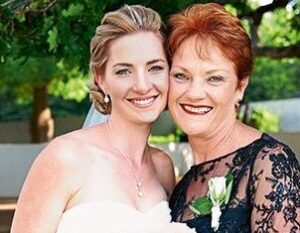Removing Trustee and Members from your SMSF
There is a good reason in wanting to share your SMSF with others such as your spouse, children, in-laws and business partners. After all, they are expensive to operate and to have the cost divided by up to 6 people makes it cheaper.
/are-family-trusts-replacing-self-managed-super-funds/
However, the very close relationship of having all members as the trustees means that you all have to get on together. Or, if there is a corporate trustee, then all members must be the directors.
In Triway Superannuation Fund v ATO [2011] AATA 302 the drug affected child member stole all the Superannuation. The ATO successfully declared the fund non-complying. So all the members suffered the ATO penalties!
You cannot, however, just kick out a member. This is unless they give their written consent.
Regulations 6.28 and 6.29 Superannuation Industry (Supervision) Regulations (Cth) states that a member’s benefit can only be rolled over to another fund with the member’s written consent. But generally, for Self-Managed Superannuation Funds, all the members have to act unanimously.
/self-managed-super-fund-intro/
SMSF Trustees must act unanimously
Generally the Trustees must act unanimously. What if the trustees cannot agree together? In Dawson v Dawson [1945] VLR 99 the court stated:
Trustees can only act if unanimous, and so no course of action can be decided upon or given effect to unless all then agree that it is desirable. Any attempt by a majority to carry on in defiance of the decision of their co-trustee can be followed by appropriate legal proceedings to ensure that only the unanimous decision be given effect
Justice Street in Sky v Body (1970) 92 WN (NSW) 934 confirmed this:
Inherent in this basic system of trusts is the principle that trustees must act unanimously. They do not hold several offices – they hold a single, joint, inseparable office. If conflicting business considerations lead to such a divergence that the trustees are not able to act unanimously, then the simple position is that they cannot act.
Therefore, on first blush, if SMSF trustees cannot agree, they cannot act.
If you cannot get rid of the person you can apply to the court. But that is expensive. And you need a good argument. Obviously, a member stealing money is a good argument.
You can update Trustees, Members and the SMSF Trust Deed all at the same time here.
You can see a full Sample here with our law firm’s Letter of Advice.
/family-trust-succession-planning/
How to remove a SMSF member:
- update the SMSF deed, contains minutes and the law firm’s covering letters
- update ASIC (if you have a company as trustee of the SMSF) and the ATO
- lodge change of superannuation entities details form with ATO and ABR
- calculate exit member’s balance to the current date
- prepare rollover statement for the exit member
- notify SMSF trustee of the payout figure for the exit member
If you have any further questions please contact us. We are a law firm so we can give legal advice as you build the SMSF Deed update.
Members fighting in SMSFs
Superannuation is money you lock away for your retirement. You can choose an industry, retail or self-managed fund. A third of Australian superannuation assets are in Self-Managed Superannuation Funds (SMSFs). If you have an SMSF, you keep control of your superannuation. But what happens when the SMSF members fight?
All SMSFs members have to work together – it is the law
SMSFs are expensive to operate. Often Mum and Dad want to bring their children into the SMSF as members. Mum and Dad might even bring in their son or daughter-in-law. You can have up to six members in your SMSF. Irrespective of what your SMSF Trust Deed states, the law requires that all members agree on big decisions. This makes SMSFs intimate. Think about how hard it is to get Mum and Dad to agree on anything. Then add children and in-laws.
The alternative is a “single-member” fund. This has one member and a company as the trustee. The sole member is the sole director of the corporate trustee.
What should we invest in? How much should we invest? These are challenges for both business partners and family.
Disputes in an SMSFs – when members fight
Because of this intimacy, SMSFs are hotbeds for disagreement. Members have vested interests, duties and responsibilities. Members may have different opinions about the SMSF’s investment strategy. They may lose confidence in each other. Once a dispute about an SMSF is underway, it is not simple to resolve. To compound the challenge of acting unanimously, members of an SMSF must also comply with complex superannuation and tax rules. One of my clients had this problem:

Daisy and Mum do not agree on everything.
Mum and Dad love their little princess, Daisy. She inspires Dad to start a doll factory. Mum and Dad’s SMSF owns Dad’s factory. It is the SMSF’s major asset. Daisy is also a member of the SMSF.
Daisy marries her long-term boyfriend Ben. Daisy’s father is particularly happy as ‘the young man does what he is told’. Dad wants Ben to join the SMSF to reduce costs.
From the excitement, Dad suffers from a fatal heart attack. Mum gets his Superannuation. In his memory, Mum wants to continue owning the factory. Ben wants to sell the factory. He laments:
1. ‘the factory is a bad investment’
2. ‘with bad tenants’
3. ‘with a lower than market rent’
Deadlock. Mum and Ben stop talking. Daisy is stuck in the middle. Even if she wanted to pick a side, the Trust Deed requires three signatures on all documents.
How to stop members fighting in an SMSF
For disputes in SMSFs, your best insurance policy is a well-drafted SMSF Trust Deed. This sets out the SMSF’s purpose and strategies to avoid problems. It describes the process to deal with disputes quickly and inexpensively. See a Sample of our SMSF Trust Deed here.
Disgruntled members of SMSFs can’t force other members to act. Usually, members must reach a unanimous decision. Where the Trust Deed doesn’t specify the process to resolve a dispute, members choose the process. Many members try informal dispute resolution before going to Court.
To stop a dispute the SMSF member leaves
Sometimes, differences cannot be reconciled. Members leave the SMSF. By law they must take their interest. But what if the SMSF assets are not easy to separate? What if the major asset is a doll factory? Members might have to sell the fund’s assets. They might even have to wind up the SMSF. Issues arise where the members cannot agree on the value of the assets.
Returning to my client’s problem:
Mum, Daisy and Ben cannot get over their differences. The SMSF Trust Deed says to undergo Conciliation. Mum also sees a grief counsellor. They agree to sell the factory. They can remember Dad in other ways.
Now, Ben and Mum disagree on the value of the factory. They seek independent valuation, agree on a middle ground and sell the factory. Ben and Daisy take their cash and start their own SMSF. There are Capital Gains Tax (CGT) and stamp duty problems. But Ben doesn’t care. He is happy to be rid of Dad’s shackles.
SMSF Trustee’s five duties – reduces conflict
Members of SMSFs have duties and responsibilities: s 52B SISA Superannuation Industry (Supervision) Act 1994 (Cth) (SISA).
These are to:
- Act honestly
- Exercise care, skill and diligence
- Act in the beneficiary’s best interests
- Keep the SMSF’s funds and member funds separate
- Comply with the sole purpose test – hold the assets for retirement
All members manage and operate the SMSF. All members must follow the duties, responsibilities and sole purpose test. Therefore, members cannot blame bad decisions and lost money on anyone else. Accountants, lawyers and financial planners just provide advice. Every member is liable for their decisions and decisions made by other members.
Where a member breaches a duty, then the other members apply to the Court for an injunction: s 315 SISA.
The injunction restrains or requires performance. The Court may also award damages: s 55(3) SISA.
Breaching member duties – more SMSF fighting

Ben wants to sell the SMSF’s only asset to buy a spot on the Azure.
Many years later, Daisy and Ben reach retirement age. Ben’s best friend and business partner John is a member of their SMSF. (They didn’t learn from previous experience.)
Ben wants to withdraw his share of the SMSF. This is to buy a permanent berth on the ‘Azure of the Ocean’. But the SMSF assets are lumpy and large. The only cash in the bank is required to pay for maintenance of the SMSF’s property. To pay Ben, the members must sell this major asset. Daisy agrees. But John disagrees. He says the market is depressed. Selling the SMSF’s major asset incurs fees and taxes. He loses money. It is better to wait two years. But in two years, Ben could be dead. He wants his lump sum now.
Unwilling to pass up a once in a lifetime opportunity, Ben strips the bank account of the maintenance money. Ben and Daisy flee to the ship.
Getting rid of an SMSF member
Members of an SMSF might want to get rid of another member. This happens often when there are disputes in SMSFs. If they are convicted of a dishonest offence, it’s easy. The Australian Taxation Office (ATO) removes them. But what if they won’t leave? Or what if there is a disagreement about whether there is dishonest behaviour?
Worst still, the ATO may replace them with an “independent trustee”: s 133(1) SISA. This causes the SMSF to cease being an SMSF. It becomes a “small APRA fund”. This is the kiss of death. Independent trustees take control and sell all the assets.
John reports Ben to the ATO. Ben and Daisy cannot be found. John is liable for the SMSF’s non-compliance. The ATO appoint an independent trustee. The SMSF becomes an APRA fund. The independent trustee sells the properties to the market.
How to avoid member disputes in an SMSF
SMSFs give you control of your money. Your success means a comfortable retirement. You may have many reasons to invite more members to the SMSF, such as succession planning or cost. With many members involved, disputes in SMSFs can be unavoidable. Even in the best of families, parents and children don’t always see eye to eye. Children grow up and form their own relationships and families. Anticipate and plan for the possibility of disputes.
Ensure that your SMSF documents are clear. If you already have an SMSF Deed update it here. If unanimous decision-making is unlikely to succeed for you and your family or business partners, perhaps a single member SMSF is more suitable for you.
Written by Adjunct Professor, UWA Law School, Dr Brett Davies and Maddie Mulholland, UWA LLB, BCom Student.












